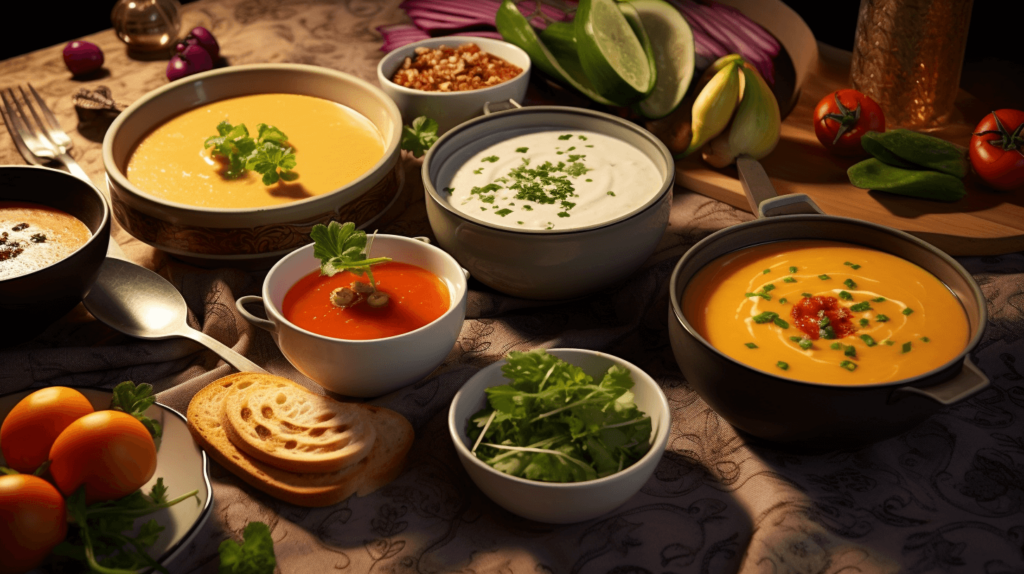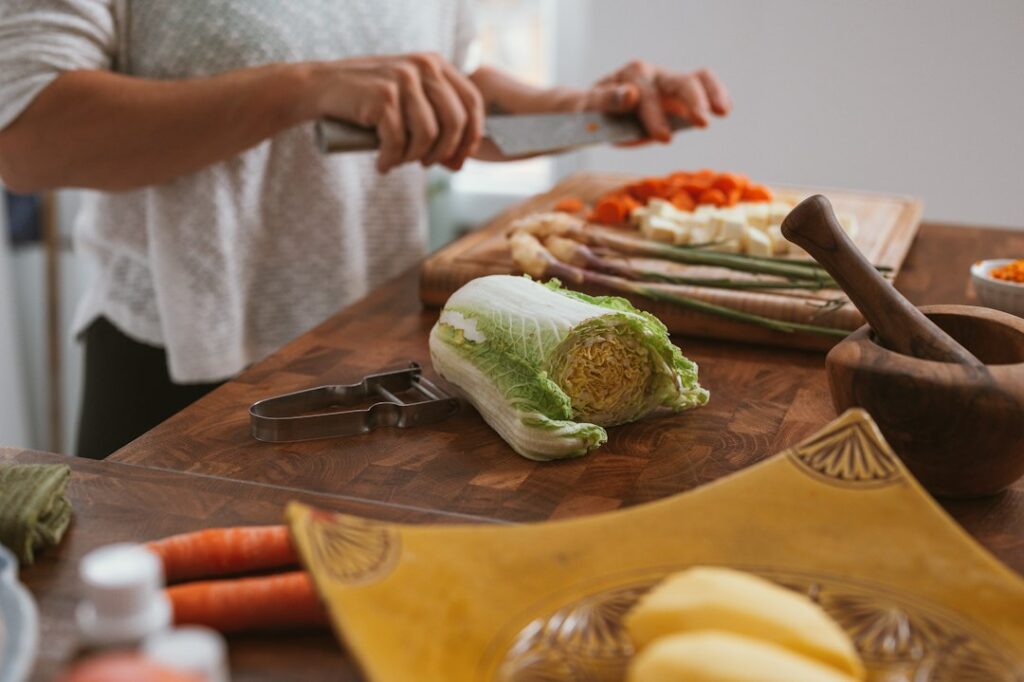As someone who has always found solace and joy in the kitchen, my journey with soups has been nothing short of a culinary adventure. I still vividly remember the first time I transformed a basic broth into something spectacular, using nothing but a handful of simple ingredients and a dash of creativity. It was a cold evening, and the challenge was to make do with what I had in my pantry. That experiment not only warmed our bodies but also sparked a passion in me to explore the endless possibilities of soup making with soup enhancement tips.
Soups, in their essence, are a canvas for creativity, a blend of flavors, textures, and aromas waiting to be enhanced. From the humble beginnings of boiling bones for broth to the intricate layering of flavors, the art of making soup is both ancient and universal, transcending cultures and cuisines. This guide is designed to take you from the simplicity of a basic broth to the complexity of a soup that tingles all your senses, making every spoonful a testament to your culinary prowess.
Embarking on this journey of soup enhancement tips, we will delve into the secrets of improving homemade soups, unravel soup cooking secrets, and share delicious soup tips that elevate basic soups into something truly spectacular. Whether you’re a novice cook or a seasoned chef, these tips are designed to inspire and guide you through the process of elevating your soup recipes, turning the ordinary into the extraordinary.
So, grab your pot and ladle, as we embark on a flavorful expedition to transform your soups with techniques and tips that will turn every bowl into a masterpiece. From improving homemade soups with rich, flavorful broths to adding unexpected twists that leave a lasting impression, this soup cooking guide is your companion in the quest for spectacular soups.
The Foundation of Flavor
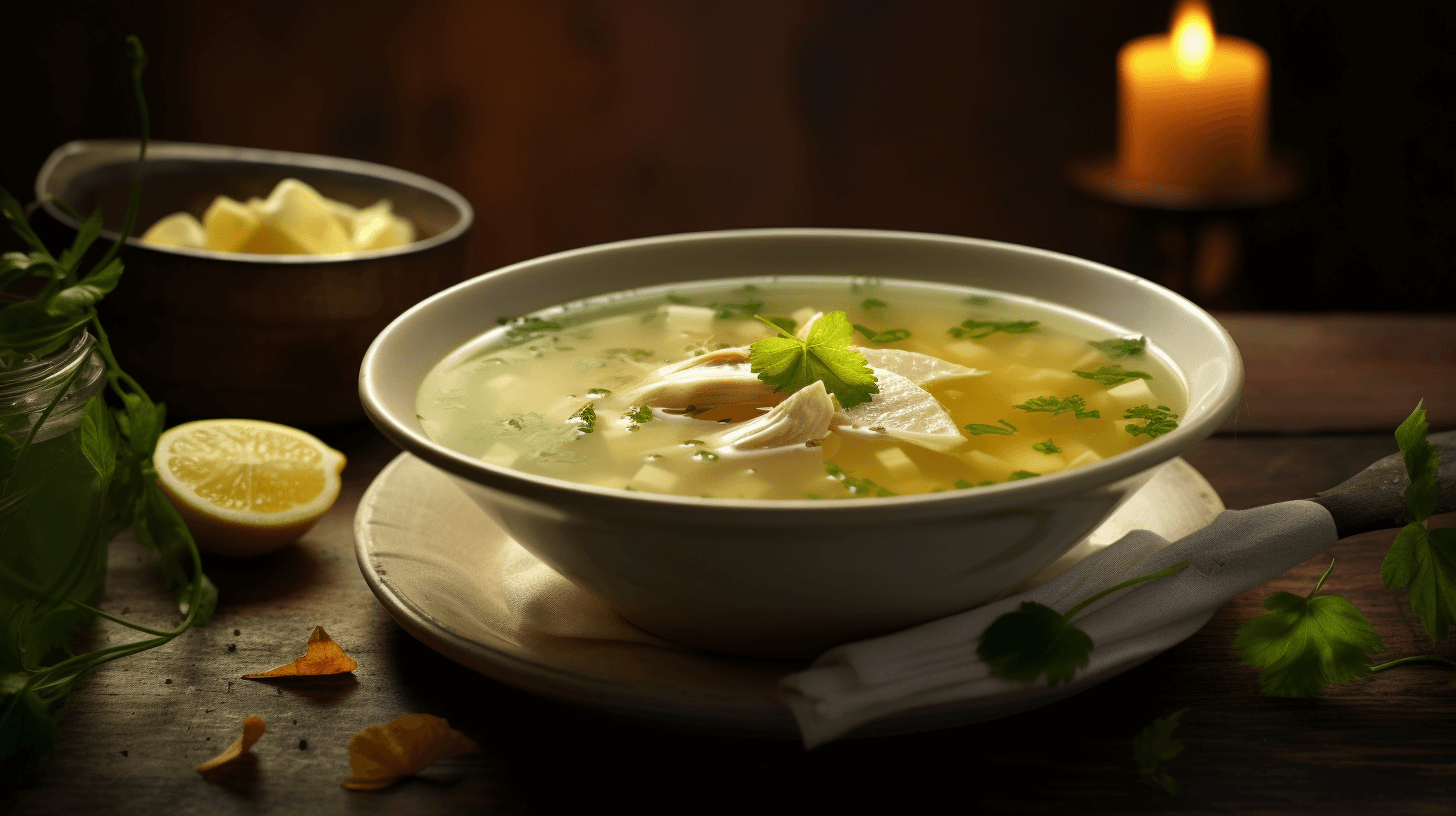
The Art of Broth
A great soup starts with a great broth. It’s the foundation upon which all other flavors are built, making it crucial in improving homemade soups. Whether you’re working with vegetable, chicken, beef, or fish broth, the key is depth and richness.
To enhance your broth, consider roasting bones or vegetables before simmering them in water. This simple step can dramatically amplify the flavor profile of your broth, providing a robust base for your soup. Additionally, incorporating aromatics like onions, garlic, carrots, and celery, along with a bouquet garni, can infuse your broth with layers of flavor. Remember, the longer you let your broth simmer, the more complex it will become. Patience here is not just a virtue; it’s a necessity for delicious soup tips.
Soup Secrets Revealed: Seasoning and Spices
Seasoning is where your soup transitions from good to great. The secret lies not just in what you use, but also in how and when you use it. Salt, the most basic of seasonings, should be used judiciously throughout the cooking process, allowing it to draw out and enhance the natural flavors of your ingredients.
But don’t stop at salt; explore the world of spices and herbs. Fresh herbs should be added towards the end of cooking to preserve their flavor and color, while dried herbs and spices benefit from being added earlier, giving them time to infuse the soup with their essence. A pinch of smoked paprika, a dash of cumin, or a sprig of fresh thyme can elevate a basic broth into a spectacular soup.
In this journey of soup enhancement tips, understanding the foundational elements of flavor is crucial. By mastering the art of broth and the nuances of seasoning, you’re well on your way to elevating basic soups into culinary delights that warm the soul and tantalize the taste buds.
Texture Transformations
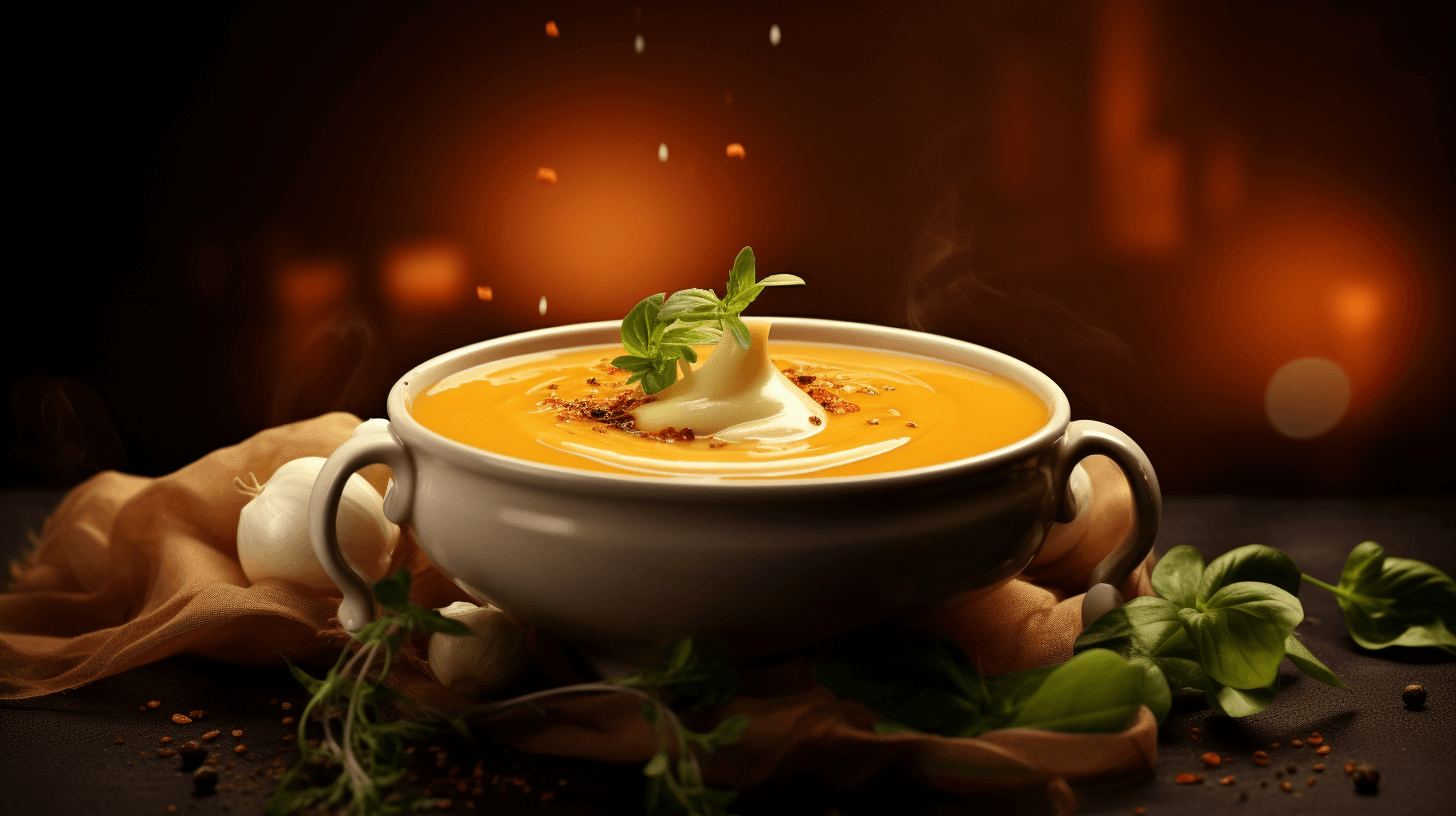
From Purees to Particles
The texture of your soup can transform a dining experience from mundane to extraordinary. It’s not just about the taste; it’s about how the soup feels in your mouth. Soup preparation techniques play a pivotal role in achieving the perfect balance between smoothness and chunkiness, elevating the overall sensory experience of your dish.
For a velvety smooth soup, consider pureeing your ingredients after they’ve been cooked to softness. This technique works wonderfully with vegetables like pumpkin, carrots, or potatoes, creating a creamy consistency that’s both rich and satisfying. On the other hand, if you prefer a soup with more body, adding grains like barley, rice, or even pasta can introduce a delightful chew and heartiness to your dish. The key is to decide the texture that complements the flavors of your soup and to execute it with precision.
The Final Touches
The final touches to your soup can dramatically change its character and presentation. A drizzle of high-quality olive oil, a dollop of cream, or a sprinkle of fresh herbs can add both flavor and visual appeal, turning your soup from basic to spectacular.
Consider the impact of a crunchy element like croutons, toasted nuts, or seeds added just before serving. These not only introduce a contrasting texture but also add a layer of complexity to each spoonful. Moreover, these elements encourage improving soup recipes by allowing you to experiment with different combinations, finding the perfect balance that speaks to your taste.
Texture is an often overlooked but critical aspect of soup enhancement tips. By thoughtfully integrating various textures, you can elevate your soups from simple, comforting bowls to spectacular soups that are a feast for the senses. Whether it’s through pureeing for smoothness or adding components for bite, the texture of your soup is a canvas awaiting your creative touch.
Complexity with Ingredients
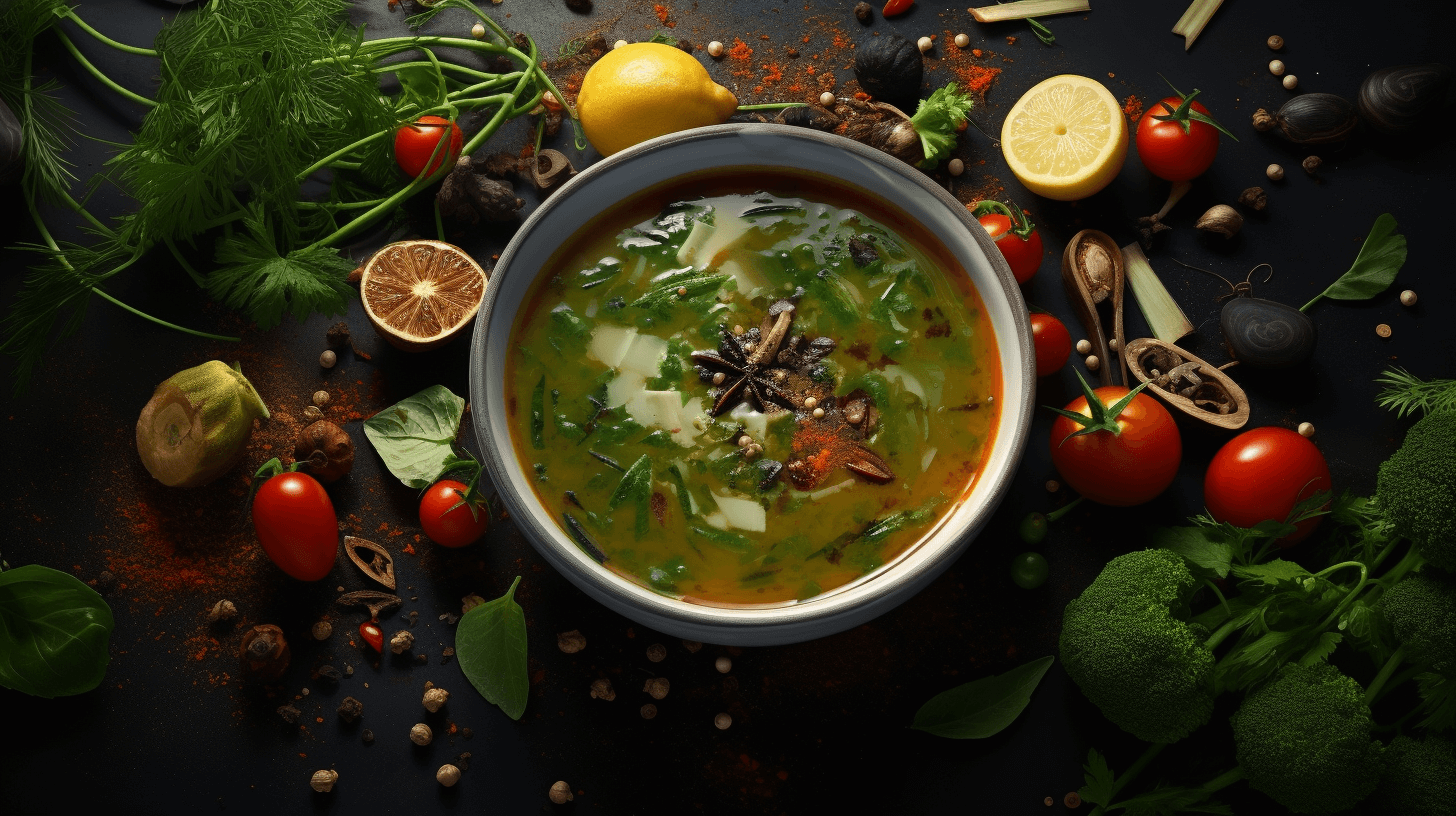
Elevating Basics with Uncommon Additions
To truly elevate basic soups, one must dare to experiment with uncommon additions. These ingredients can introduce unexpected flavors and aromas, transforming a traditional recipe into a memorable culinary experience. For instance, a hint of coconut milk can add a creamy, tropical flair to a classic vegetable soup, while a dash of miso paste can provide depth and umami to a simple broth.
Incorporating ingredients like smoked meats, exotic spices, or even a splash of wine can also enhance the complexity of your soup. These elements work by layering flavors, creating a richer, more nuanced dish. It’s these unexpected touches that can turn an ordinary soup into a spectacular soup, leaving your diners guessing the secret behind the extraordinary taste.
Seasonal and Local Splendors
Utilizing seasonal and local ingredients is not only a nod to sustainability but also a secret to improving homemade soups. Seasonal produce is at its peak of flavor, offering the best in terms of taste and nutrition. By building your soup around these ingredients, you ensure a freshness that can’t be beaten.
Local farmers’ markets are treasure troves of inspiration for soup preparation techniques. Here, you can find heirloom varieties of vegetables, fresh herbs, and other unique ingredients that can inspire new soup creations. Embracing the seasonal and local ethos encourages a connection with your food’s source and promotes a cycle of eating that’s in harmony with nature’s rhythms.
In this quest for spectacular soups, embracing the complexity of ingredients—be it through daring additions or the simplicity of fresh, local produce—can dramatically elevate your soup-making game. These soup enhancement tips not only improve the flavor profile of your dishes but also contribute to a more mindful and creative cooking practice.
Presentation and Pairing

Eye Appeal: Serving Spectacular Soups
The visual presentation of your soup plays a crucial role in the overall dining experience. A spectacular soup delights not just the palate but also the eyes. Consider serving your soup in unique bowls or dishes that complement its character. A rustic, hearty stew, for example, might look most inviting in a handcrafted earthenware bowl, while a delicate consommé could be best appreciated in a fine, clear glass bowl.
Garnishing your soup is an essential step in presentation. A sprinkle of fresh herbs, a few edible flowers, or a swirl of cream can dramatically elevate the visual appeal of your dish. These finishing touches not only add color and texture but also hint at the flavors within, making each bowl a work of art that’s as beautiful to look at as it is delicious to eat.
Complementary Pairings
No soup is an island, and finding the right accompaniment can turn a simple meal into a feast. This aspect of soup enhancement tips encourages you to think beyond the bowl and consider what breads, wines, or salads might complement your soup.
A crusty sourdough or a slice of rye bread can offer a satisfying crunch and flavor contrast to a smooth soup, while a light, crisp salad can provide a refreshing counterpoint to a richer, creamier dish. When it comes to wine, consider the soup’s main flavors: a bright, acidic white might pair beautifully with a seafood chowder, while a robust red could complement a tomato-based minestrone.
Through thoughtful presentation and pairing, you elevate not just the flavors of your soup but the entire dining experience. These final touches of garnishing and pairing are what can transform good soups into spectacular soups, making each meal a memorable occasion.
By embracing these soup enhancement tips, from the foundational flavors and textures to the final presentation and pairing, you’re well-equipped to turn any simple soup into a spectacular showcase of culinary skill. Remember, the journey of soup-making is as much about creativity and experimentation as it is about tradition and technique.
Final Thoughts With My Soup Enhancement Tips
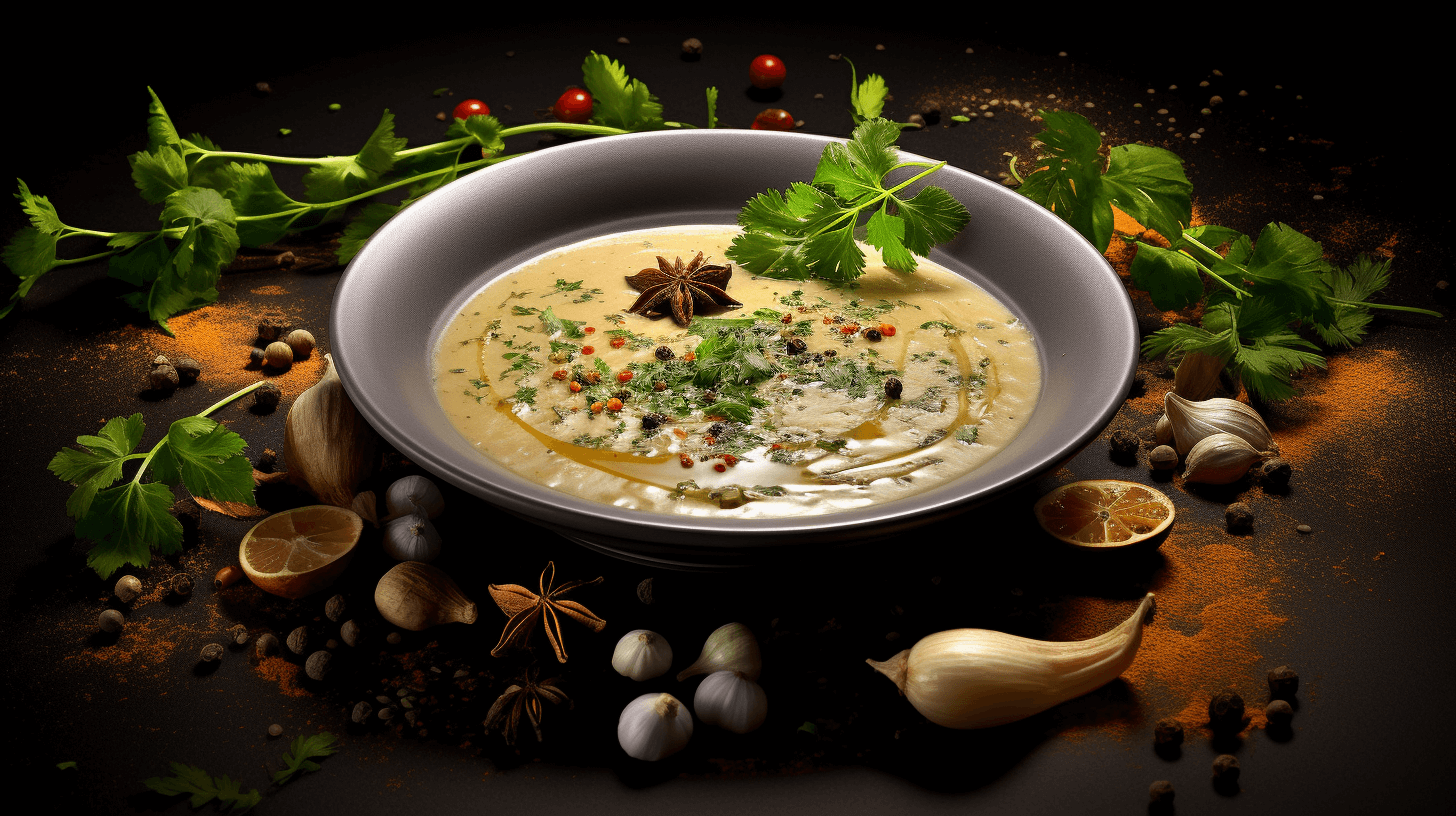
As we wrap up this journey through the art of transforming simple soups into spectacular soups, it’s clear that the process is as much about passion and creativity as it is about following recipes. Each tip and technique shared here, from the foundational flavors and textures to the unexpected ingredient twists and the finesse of presentation, serves as a stepping stone in elevating your soup-making craft.
Soup enhancement tips are not just guidelines; they are invitations to experiment, to taste, and to tweak, making each soup a reflection of your unique culinary voice. Whether you’re a home cook seeking to improve homemade soups or a seasoned chef exploring new soup preparation techniques, the essence of creating a spectacular soup lies in the joy of cooking and the love of sharing your creations with others.
Remember, the magic of a great soup is not just in the ingredients but in the care and thought put into each step of the process. It’s about taking the time to simmer that broth, to taste and adjust seasonings, to choose garnishes that add both flavor and beauty, and to consider pairings that enhance the overall experience.
As you continue on your soup-making journey, let these soup cooking secrets inspire you to push boundaries, explore new flavors, and cherish the process of bringing warmth and nourishment to your table. Share your creations, learn from each bowl, and never underestimate the power of a good soup to bring people together.
So, here’s to the pots yet to simmer on our stoves, to the ingredients yet to be discovered, and to the many meals we’ll share. May your soups be ever warming, your flavors bold, and your tables welcoming. Keep experimenting, keep tasting, and above all, keep sharing the joy of spectacular soups.

